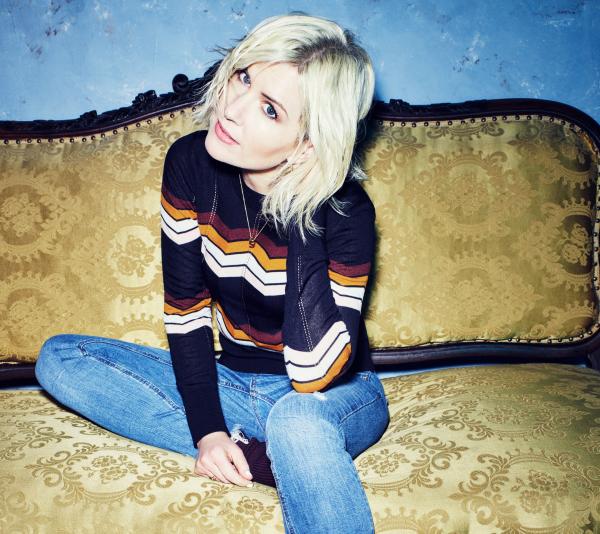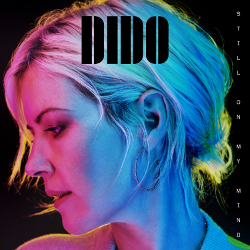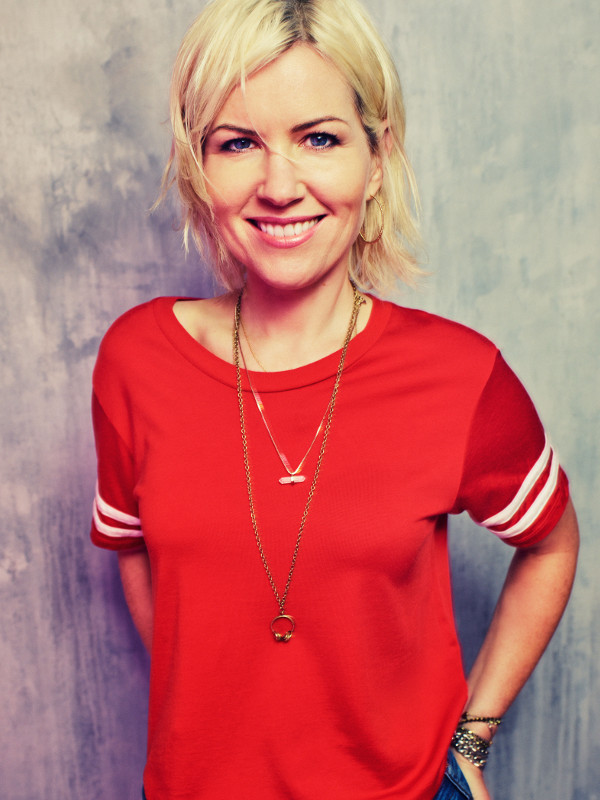Dido: A Vocal Ingenue Who’s Still on Our Minds

To modify a line from a certain vintner of a certain vintage, some artists will serve no album before its time. Witness the case of celebrated British chanteuse Dido, she of the pre-Adele-era golden Anglo voice who has released just five albums over the span of her 20-year career. The fact is, Dido (whose name stems from that of the mythical Queen of Carthage, by way of Roman poet Virgil’s epic Aeneid) has chosen to follow her muse quite wisely over these past two decades. This idea is handily supported by the songwriting depth in evidence on albums like 1999’s No Angel and 2003’s Life for Rent, as well as within some of the resultant, internationally impactful and very much heartfelt earworms/hits like “White Flag,” “Thank You,” and “Here With Me.”
Songs that cut as deep as the aforementioned entries from Dido’s catalog don’t just emerge on a whim, however — they’re what we call lived-in. “As you say, there needs to be some life happening in between the work,” Dido acknowledges. “There are certain things that inspire me, and certain things that don’t. And I’m not necessarily inspired to write by the bigger-picture things. I tend to be inspired by the really small things.”
All such small things have recently born much new sonic fruit across the even-dozen tracks that comprise Dido’s just-released fifth studio album, Still on My Mind (BMG). Mind was co-produced with her older brother Rollo — he of the tres-hip British electronica trio Faithless, as well as being a noted producer/remixer who co-helmed Dido’s first two megaplatinum hit albums. In addition to penning the bulk of the lyrics and shepherding the demos, Dido herself provided a number of the cool beats that permeate such masterful Mind tracks as the album-opening gale-force known as “Hurricanes,” the percussive, horn-laden lament of “Hell After This,” and the tense rush of “Mad Love.”
Dido, 47, called across the Pond to discuss how her best song mixes are meant to draw you in as a listener, when and when not to use reverb, and why sequencing remains critical to the arc of an album. Let me face the sound and fury. . .
 Mike Mettler: The opening track to Still on My Mind, “Hurricanes,” is so well-arranged that it’s like a five-minute audio movie to me. On it, your voice starts out really sparse before that big percussion break happens about two minutes into it. I don’t think you could start an album in a better way.
Mike Mettler: The opening track to Still on My Mind, “Hurricanes,” is so well-arranged that it’s like a five-minute audio movie to me. On it, your voice starts out really sparse before that big percussion break happens about two minutes into it. I don’t think you could start an album in a better way.
Dido: I remember when we did it, and right at that point, I thought it was such a great opener. It was just a good way to open things, you know? Who knows what will happen, but I think that track would also be a great way to open up a live show.
Mettler: Oh, I’d love to see that. There’s also a little bit of an echo on your vocal on “Hurricanes,” which is a bit different than what we hear from you on other tracks. Do you choose to keep your voice more “naked” for certain songs than on others?
Dido: Yeah. I like it when it’s a bit drier sometimes, because for me, it’s all about what draws the ear in that will get you to listen. If there’s too much reverb, it sort of pushes you away. For me, it’s all about sucking the ear in. There’s a big difference you can actually hear, and you want to end up with things like that when you’re mastering a record. You can have a sound that literally pushes you away from it, and then there are the sounds that suck you in. That’s really noticeable to me. For me, the vocals need to draw you in. That really is the key to all of it.
Mettler: I also like the way you stretch out syllables in certain words you sing — the way you draw out the “i” and the “a” sounds, for example. Is that something that happens in the moment, or do you know you’re going to sing it that way ahead of time?
Dido: A lot of it happens in the moment. My approach to my vocals is that I tend to go with the first idea. With “Hurricanes,” that’s actually a demo of the very first time I’m singing it. I’d already written the song on guitar, and I said to Pete Rinaldi, who played the guitar on it, “I’m not going to show you my chords. I’m going to play you the song, but not with the chords I wrote on my guitar. You just play something, and let’s see what we get.”
I started singing the song, and you can hear how he’s riffing on the same chord. It just sits there, and he goes, “Well, I’m not going to move it.” Then we did it, and that was that. It was so funny, because we tried to re-record it, and it never had that same magic.
Mettler: “First thought, best thought” is the idea a lot of people prefer to go with in those situations.
Dido: I think so. I know now when I go into the studio, I’m always like, “Record the first vocal, because that will be the one.”
Mettler: There’s also a very clever stop in that song where you make us think it’s over after you’ve shifted into that different movement, then you come back with the last two minutes of it.
Dido: Yes, yes — exactly! Everyone’s like, “Oh, it’s over. . . no, wait, it’s still going on!” (chuckles)
Mettler: I like that, because it makes me want to listen to that track again and again. It’s not a one-and-done kind of listen, and I think you get even more out of “Hurricanes” if you listen to it with headphones on.
Dido: You do! I have to say, I think that’s the brilliance of my brother’s production. When you put the headphones on, it’s clear. All those little details come out.
Mettler: When you and Rollo were talking about the production ideas up front, what’s the process between you two? You already have a DNA shorthand, so that must help a bit.
Dido: Yes, exactly! We don’t have to talk that much about that sort of thing, but for the first time ever, I actually gave him a brief this time. It was, “This is what I want to do.” I wanted to produce it in a way where you could take it as a live show and place it in this wonderful place in London called the Union Chapel, which you may not have heard of.
Mettler: I’ve actually heard of it. I know artists like Procol Harum and Billy Bragg have recorded some stuff there. It’s a great-sounding room.
Dido: Right, that’s the one! So, that was the only brief I gave him. I wanted to keep it simple and not have too many parts, and it needed to translate into that venue, if I wanted to perform it there. After that, it was just about the songs.
It was really fun this time. And partly because of the circumstances of how we were writing, I was doing more production and creating more beats than I normally would. I would have ideas for songs like “Hell After This” and “Mad Love” that I would send to him that I wound up producing and doing all the beats for. I’d send them to him and say, “I think this idea is stupid, but. . .”

Mettler: (chuckles) At least you guys can be honest with each other about things like that.
Dido: Totally! He would tell me, “No no no — I actually love it!” Then he would be sending me stuff and asking, “Well, would you put beats on this?” It was sort of fun because we swapped jobs a little bit. It was a very natural record to make because we both wanted to hear the same thing in the production.
Mettler: I really do like that approach. Is there a specific example from the mastering stage where you heard something in a particular song that didn’t sound right to you, and you felt you needed to go back and tweak it?
Dido: Oh, loads! (both laugh) I’m really fussy, just because I think it can make or break a track, like if somebody’s really pushing it to where it’s quite harsh and it’s the sort of thing that’s meant to sound good on the radio but it doesn’t sound good to me. I will know if something needs to be fixed; it’s really clear to me. For instance, there are certain tracks I’ve gone on and on with until I’ve gotten them to where I want them to be.
Mettler: I also have to say that “Hurricanes” and the final track, “Have to Stay,” are the perfect bookends for this chapter of your recording life. They do have a common thread between them, but they’re quite different songs. On “Have to Stay,” your voice is mostly naked with just the right amount of reverb on it — not too much, but just enough.
Dido: It is always about being careful with the old reverb, yes. It’s funny, because getting the order was one of the hardest things to do — choosing the 12 songs and putting them in the right order for the record.
Mettler: So you had more than 12 tracks finished, and you had to boil that down some more?
Dido: Yeah, I wanted to whittle it down. But I knew “Hurricanes” was the first track, and I knew “Have to Stay” was the last track — and that’s all I knew. It was a process to figure out how to get from one song to another — you know, how to get through the journey. And that was important because, of course, vinyl has made this brilliant comeback.
Mettler: “Vinyl” is one of my favorite words, and since Still on My Mind clocks in around 45 minutes, that makes it practically a perfect two-sided record.
Dido: Exactly. On the first side, some of the songs are really long, so we did five on Side A, and seven on Side B.
Mettler: What was the first album you ever bought that’s still important to you to this day?
Dido: You know, the first album I ever bought was Paul Young’s No Parlez (1983), which was just brilliant. I loved him! And then my next two records were Kate Bush’s The Whole Story (1986) and the Pet Shop Boys album, Please (1986). Early on, my life was about saving up my money and going to the Virgin Megastore and buying a single. I’d be spending the whole day deciding: “Which one do I want to have?”
Mettler: I can relate. In those days, we only had so much money as kids, so we could only buy one 45 or one CD most any given week, and we really did have to be choosy.
Dido: We really did! It was an amazing thing, because you would go, “Well, do I want that? Do I want that?” You really had to think about what you wanted, and I’d spend all day there. Finally, I would buy my single, and then I’d go home and play it to death.
Mettler: And you knew every word and every sound, inside out.
Dido: Absolutely! And I’d get into the B-sides too. I was a teenager in the ’80s and I had trained as a classical musician when I was young [on piano, recorder, and violin at the Guildhall School of Music and Drama in London], so I wasn’t so conscious of popular music until the ’80s. But then I got a radio, and then I got a record player, and then my brother [Rollo] was playing me all sorts of cool music — although we had quite different tastes back then. The funny thing is how we have some similar references, but we also have some quite different references too.
Mettler: That’s interesting. All the things you mentioned inform the template for this album — the vocal choices of Paul Young, the production choices of Kate Bush and the Pet Shop Boys, and the classical training for some of the arrangements. They all come together here.
Dido: They do, and I think that’s because I didn’t think about it TOO much, actually. I let it all be. It was more about the feeling of making an album after all this time. [Dido’s previous album, Girl Who Got Away, came out in 2013.] This new one is a celebration of all the things I love. It’s like, “Okay, here they are. If you want to listen to it, then great, because I’ve just made a record of the things that I love.” (chuckles)
Mettler: Some people may comment that you’ve only done five albums over 20 years, but I look at it as you need to live some life in order to be able to say some new things as a writer. The muse strikes you when it strikes you. You can’t force it; you just take it as it comes to you, naturally. Do you agree with that?
Dido: That’s so true. Sometimes I get struck by an idea, and sometimes the idea comes to me after I’ve walked into my studio and sat down, and I just start singing. There’s definitely an element of me of just sitting there and doing it — where it’s almost like that flips a switch on in your brain, and it all comes out. But because I write in a straightforward and honest way — I’m just writing me — I wouldn’t know how to not do that, you know?
Mettler: Right, and it’s your choice as a songwriter to make the subject “I” instead of “you,” which a listener can relate to more personally.
Dido: Exactly, and if it’s not “you,” you’re sort of feeling it differently. And I don’t put so much of the specifics in a song so anyone listening won’t think of it as being entirely about me, if that makes sense.
Mettler: Oh, I think so. The lyrics paint one picture, and the sounds you’ve chosen to put with each song add to the picture already going on in our heads. Like the way a lot of the songs on Still on My Mind start with your vocals front and center, with the beats you’ve chosen slightly behind them in the mix. You start with one vocal track only, and then about a minute or so into each track, it gets doubled once the story starts unfolding further.
Dido: Yes, that’s about telling the story and then building on it as you go, and that sort of thing.
Mettler: I want to finish by circling back to the sequencing idea, which is something that sounds like it’s still important to you as well. You want people to listen to this album from beginning to end, don’t you?
Dido: I do. I do, yeah. And look, they don’t have to. It’s our responsibility to have them be able to do it both ways — to make an album that you can listen to as an album, but also that can work listening to in any which way too [i.e., via streaming individual tracks, etc.]. For me, that’s even more of a responsibility, because you want it to be both things. Even though other people say, “Oh, albums no longer matter” — well, they still matter to me. To me, it’s a journey, and I want it to go from beginning to end. That’s the fun of making an album. And I’ve only made five, so I’m going to enjoy myself while doing it.
Mettler: Okay, so we’ll put it on the schedule now that, in 2024, we’ll talk about your sixth album.
Dido: (laughs) Hopefully, it will be before then!
- Log in or register to post comments




































































